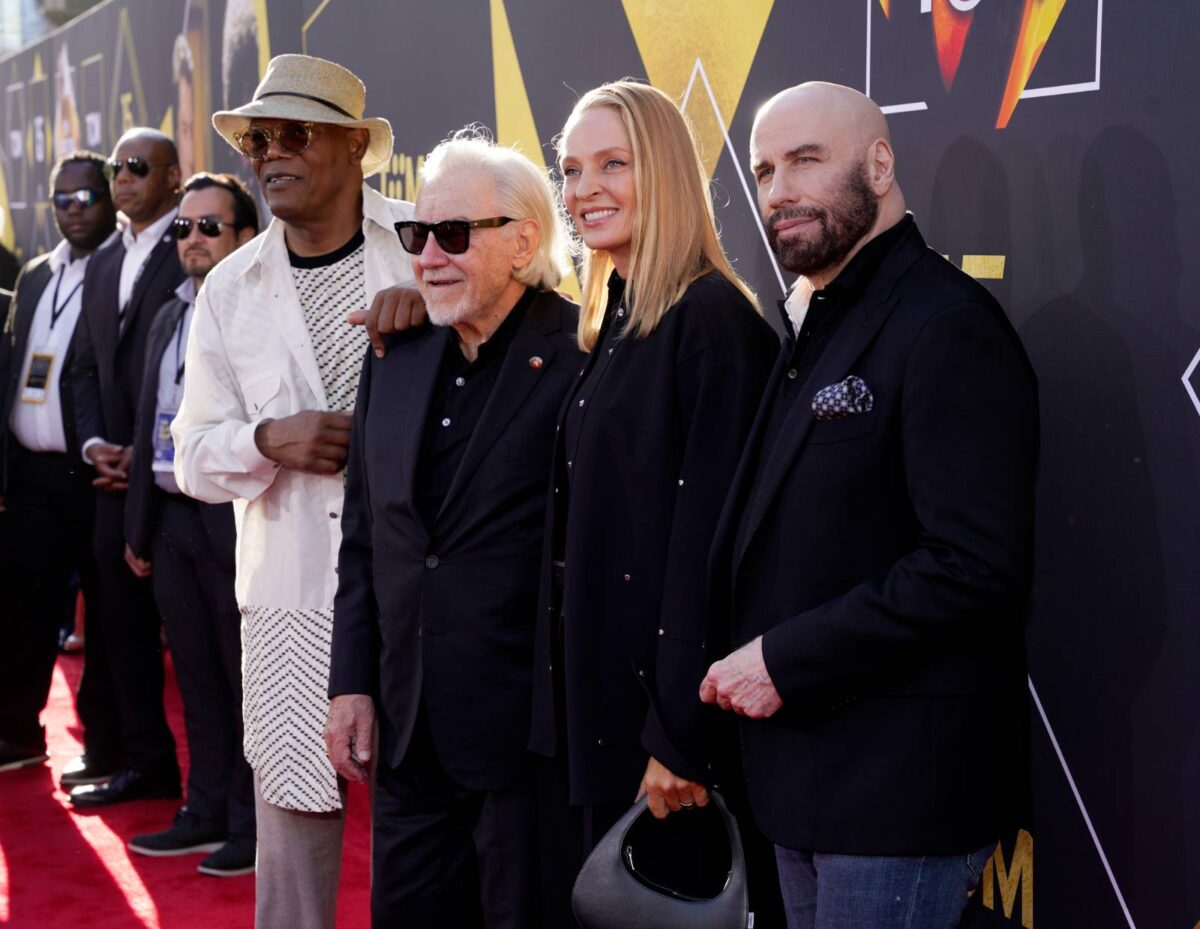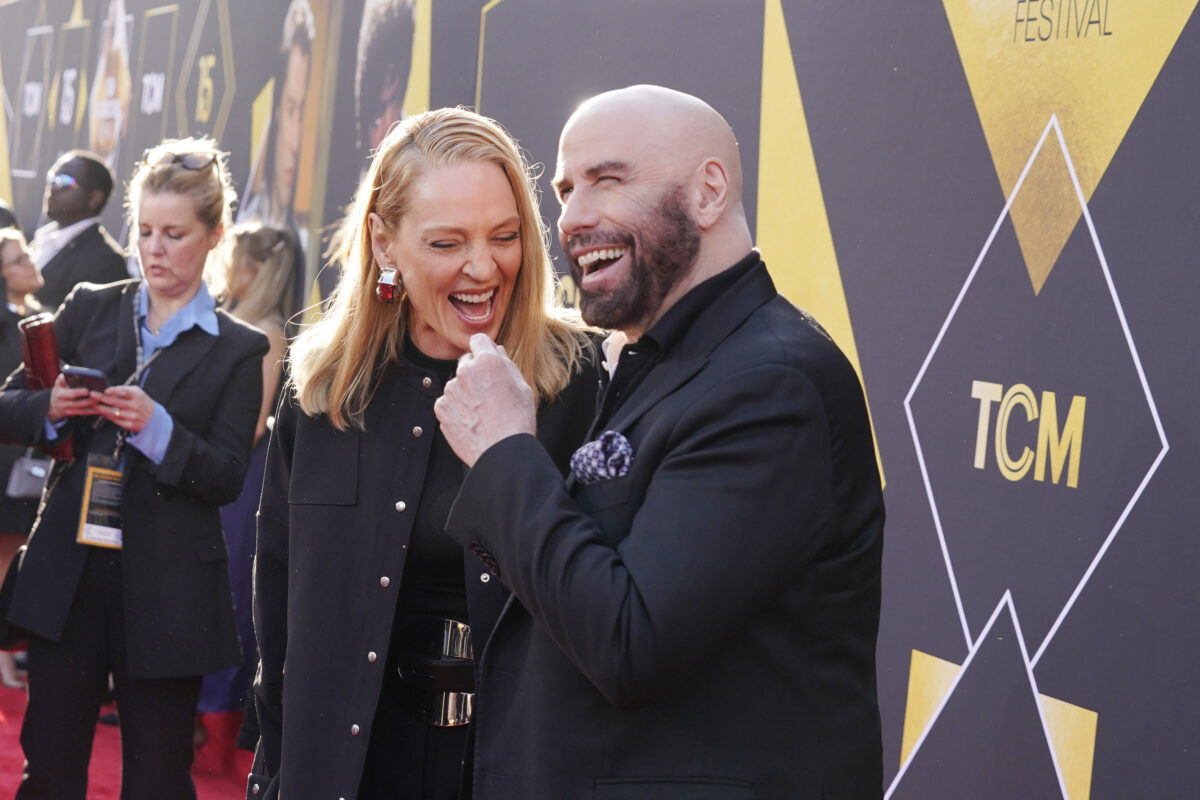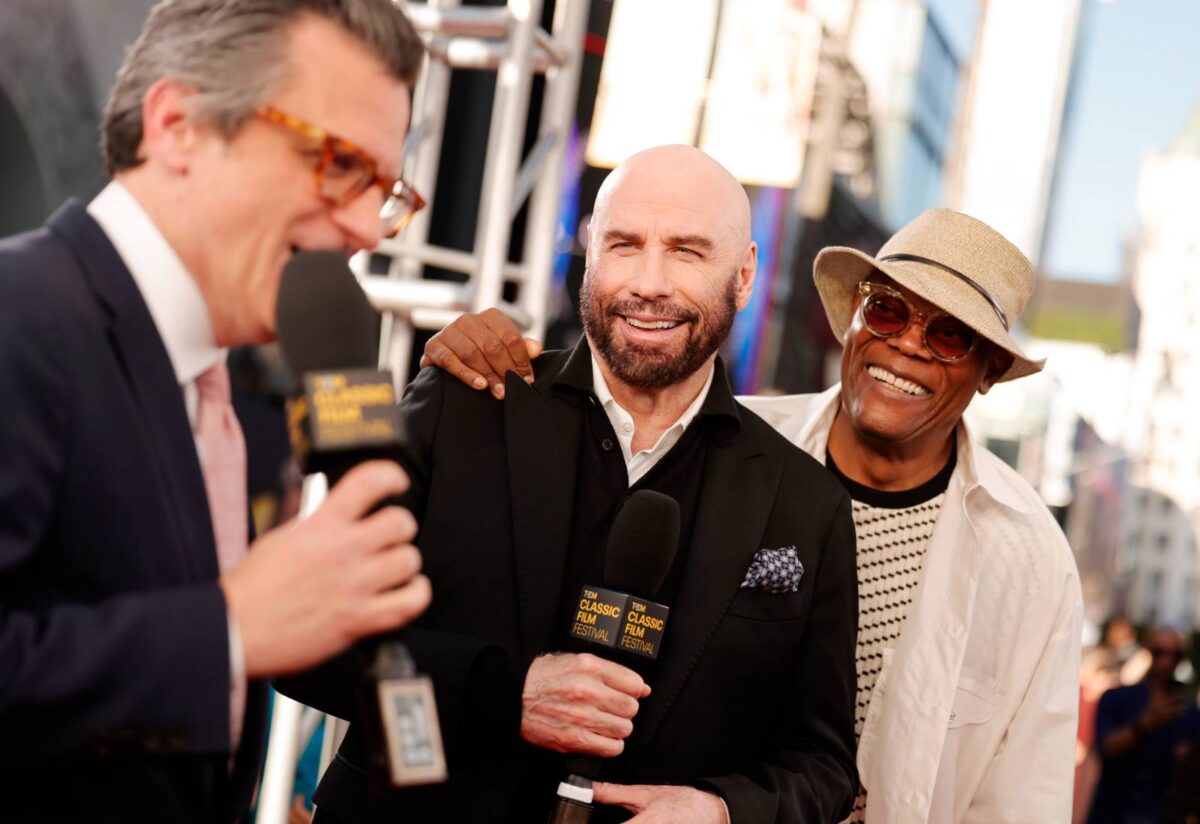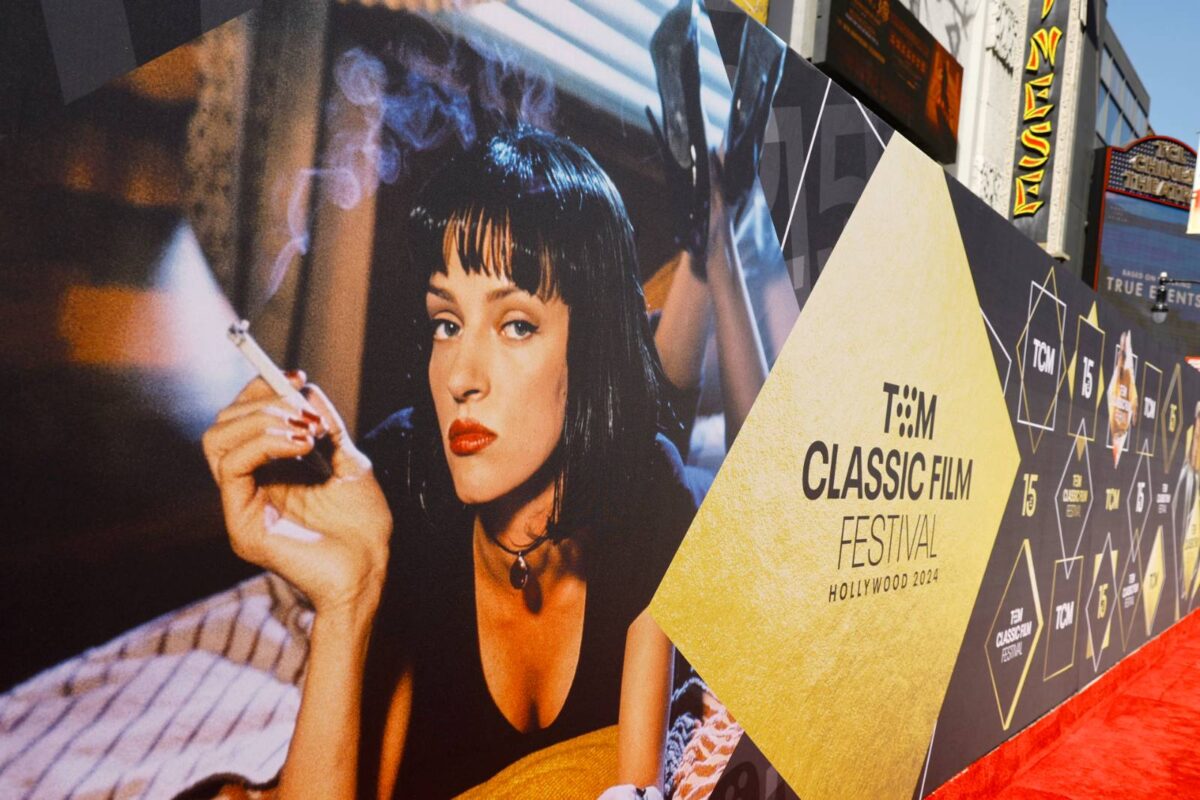“If you hear a fire alarm, take it seriously,” the woman at the podium announced. “Proceed calmly, but exit swiftly.
This was a step beyond the standard “put away your cell phones” introduction, but this was no ordinary movie––we were seated to watch an original nitrate print of George Sidney’s rousing 1950 musical Annie Get Your Gun. Thankfully, Netflix––in their three-year, gorgeous renovation of the Egyptian Theatre in Hollywood––retained its ability to screen nitrate, but if Inglourious Basterds taught us anything, it’s that you can trap and kill a hell of a lot of people with ultra-flammable nitrate stock if things go wrong.
It was the most danger I’ve ever been in while watching Howard Keel romance a woman under disreputable circumstances, and he did that often enough. The risk was plenty worthwhile to see the colors of this ostentatious, gaudy, not-a-little-bit-wacky musical really pop on an original print so well-preserved. The TCM Classic Film Festival, however, has never been shy about taking chances to revive bygone or unusual methods of exhibition. Possible combustion was only the riskiest from a safety perspective across the four days it took over Hollywood from April 18-21.
This year, amidst a schedule that included two serial-killer films, the most onscreen tension came from watching Will Hays step onscreen in a 1926 short and say the words “my friends.” He was introducing a then-new method of film exhibition: Vitaphone, in which the sound track is provided via a record-like disc that is manually synchronized with the start of the film projector. Would it begin at the right spot? Would it stay in-sync or skip around à la Singin’ in the Rain?
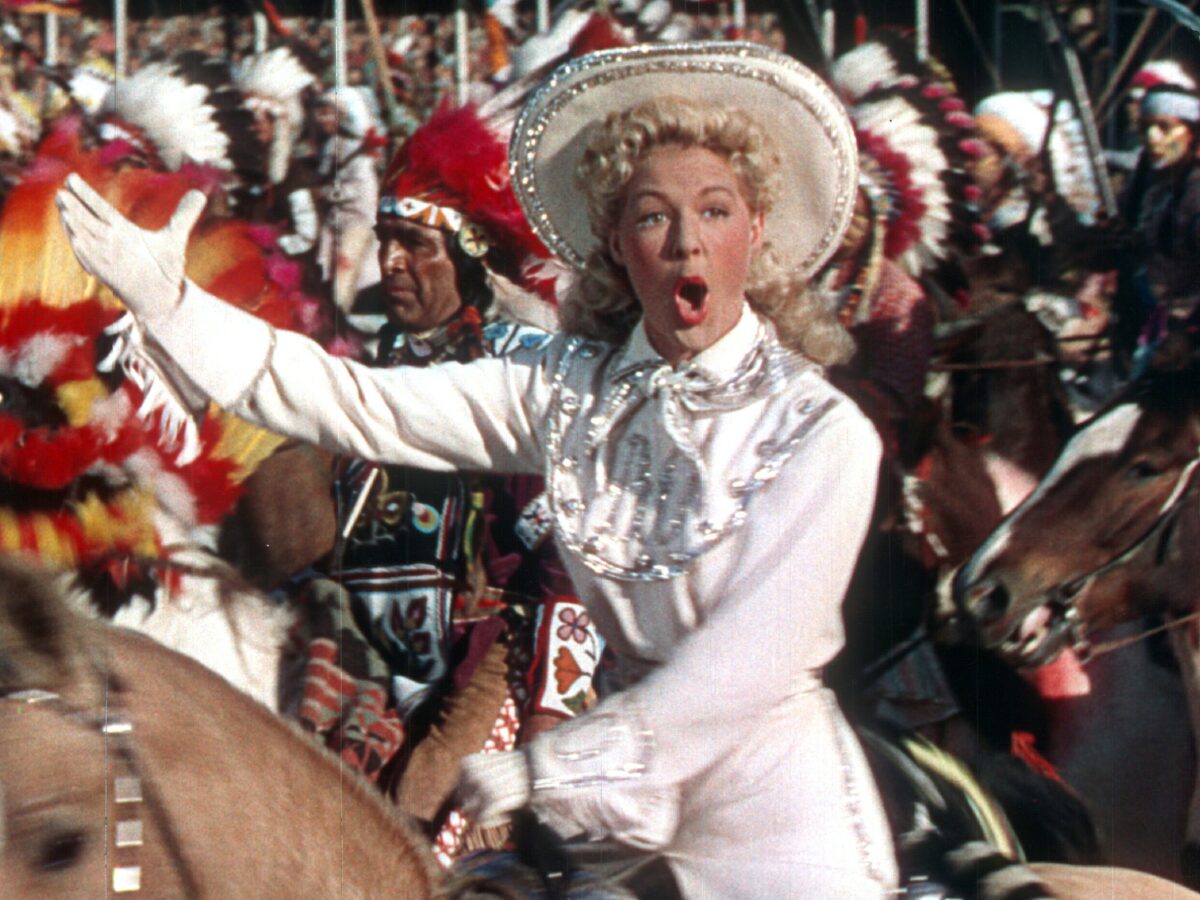
Annie Get Your Gun (1950)
We were the first audience in nearly a century to see it in action. In the discussion preceding them, Warner Bros. engineers Steve Levy (projection) and Bob Weitz (sound) explained how the discs had special grooves in them with start markers timed to the beginning of reels, though even that required adjustment––modern reels have different leaders. Across a half-dozen short films of vaudeville acts (including one with George Burns and Gracie Allen!) that rely on specific timing to land jokes, it couldn’t have gone smoother.
The reconciliation of past methods with present exhibition also came to the fore in two very different films. It Came From Outer Space, restored in its full 3-D version by Bob Furmanek’s remarkable 3-D Film Archive, brought the 1953 methods of stereoscopic filmmaking to the digital era, sending meteors flying at the audience and putting us squarely in the perspective of its cosmic creature.
Fast-forwarding over 40 years, David Fincher’s 1995 triumph Se7en was restored in 8K for IMAX presentation and an eventual 4K disc release. Fincher appeared in person at the TCL Chinese IMAX Theater to relay familiar anecdotes––the script by Andrew Kevin Walker (also in the audience) went through several revisions, and it was only by chance that he received the initial draft with its now-infamous ending; Gene Hackman was considered for Morgan Freeman’s part; that the film got he and Brad Pitt together out of shared love for 1970s classics––and though technical discussion was limited, the result spoke for itself. I’ve seen innumerable contemporary films in IMAX that didn’t look half as good as this, and being consumed in a wall of Se7en’s world was an overwhelming, thrilling experience that general audiences will hopefully be able to take in themselves soon.
The TCL IMAX, the festival’s largest venue, also hosted the opening-night gala presentation of Pulp Fiction on 35mm, which had to be specially installed in the venue. Would you expect any less of Quentin Tarantino? John Travolta, Samuel L. Jackson, Uma Thurman, and Harvey Keitel walked the red carpet and participated in a panel discussion with TCM host Ben Mankiewicz prior to the screening. Thurman kicked things off with regret that Tarantino couldn’t be there, but his absence provided an opportunity to focus on the acting achievements too often overlooked in the landmark film. Thurman was especially enthusiastic in recalling how her quest to land the role made her invest more into the work, while the men shared hilarious stories of Tarantino’s odd behavior, like calling Keitel “Keetle” or demanding Travolta play board games based on his past films and periodically pepper in lines from them.
The TCL also hosted Jodie Foster, who planted her hands and feet at the famous Chinese Theatre sidewalk, for a discussion preceding The Silence of the Lambs, which she spoke lovingly of for its importance in her career and how beautifully it all came together. She shared how she sought to direct it, and even when Orion went with Jonathan Demme, who favored Michelle Pfeiffer for the role, she flew herself to New York to lobby to be his second choice.
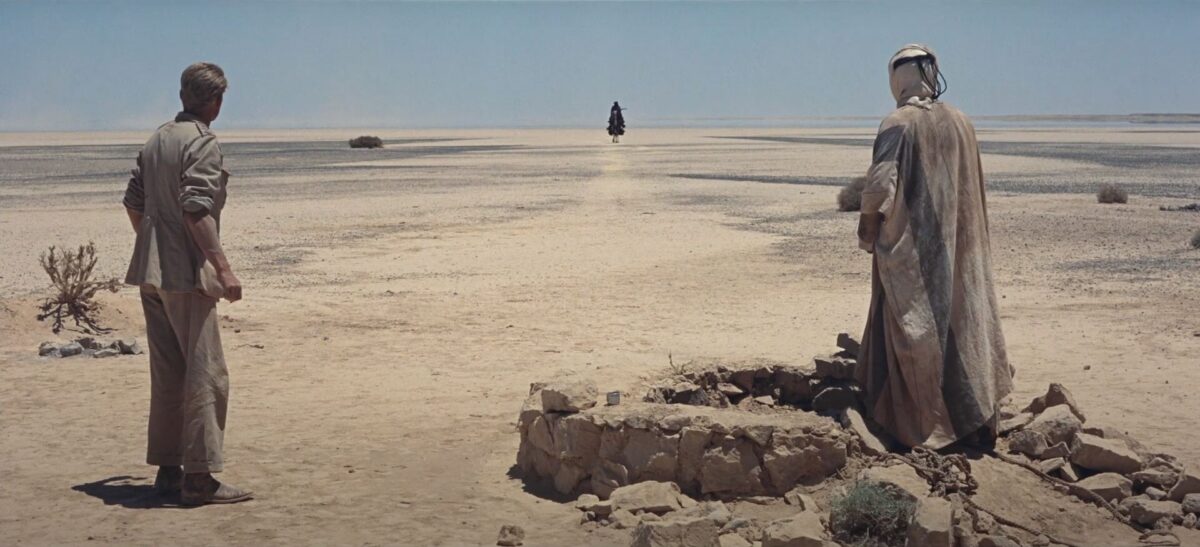
Lawrence of Arabia (1962)
Two 70mm presentations rounded out the festival’s last day, both in the Egyptian––a new print of Lawrence of Arabia, and a full restoration of The Searchers. Lawrence looked as beautiful as ever, those shimmering deserts reaching near-transcendence with the flicker of film, the blinding whites piercing the screen. The Searchers was almost a whole new ball game, even compared to seeing the film on 35mm. The 70mm print is staggeringly clear. It’s like seeing blue sky for the first time. That print plays again at the Egyptian through the American Cinematheque’s regular programming on Sunday, April 28, followed by screenings the next weekend at their Aero Theatre.
Beyond rare formats, rarer films were also present. Some have never been released on DVD, like Only Yesterday, Queen of the Mob, or the one I took in, the 1984 Canadian aerobic dance sports film Heavenly Bodies, which played as part of their midnight programming and was the weekend’s great discovery. Lead by a magnetic, energetic, heartfelt performance by Cynthia Dale and composed largely of dance sequences, the film was fundamentally thrilling in a way more measured films can only dream of being.
When the fire alarm did eventually sound, it was thankfully down the block from the Egyptian, at the TCL multiplex where TCM claims three screens. It was nearly 10 p.m.; I was in the middle of George Sidney’s lovely Summer Stock, and needed a break for some caffeinated beverage. TCM Fest is nothing if not a marathon of legendary, forgotten, strange, altogether thrilling cinema, and this was the best line-up I’ve had at the festival in years. This was their fifteenth edition; I can hardly wait for the next fifteen.

